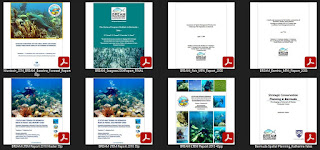Click each title below to launch a new window with the relevant report as pdf document Murdoch TJT, Glasspool AG, Outerbridge M, Manuel SA (2004) The Status of Seagrass Habitats in Bermuda. Bermuda Reef Ecosystem Assessment and Mapping (BREAM) Programme, Bermuda Zoological Society, Flatts, Bermuda. . 137 pp. Murdoch TJT, Hammond PJ, Glasspool AF, Outerbridge M, Clee J, Shailer M, Colella M (2008) A multi-scale assessment of the benthic communities of Bermuda's shallow water platform, focusing on existing MPA's & control sites to enhance local management practices. Bermuda Reef Ecosystem Assessment and Mapping (BREAM) Programme, Bermuda Zoological Society, Flatts, Bermuda. 88 pp. Hammond PJ, Murdoch TJT, Glasspool AF, Outerbridge M, Clee J, Shailer M, Colella M (2008) Assessment of Spatial Management Practices for Enhancing Fish Populations in Bermuda. Bermuda Reef Ecosystem Assessment and Mapping (BREAM) Programme, Bermuda Zoological Society, Flatts, Bermuda. ...

